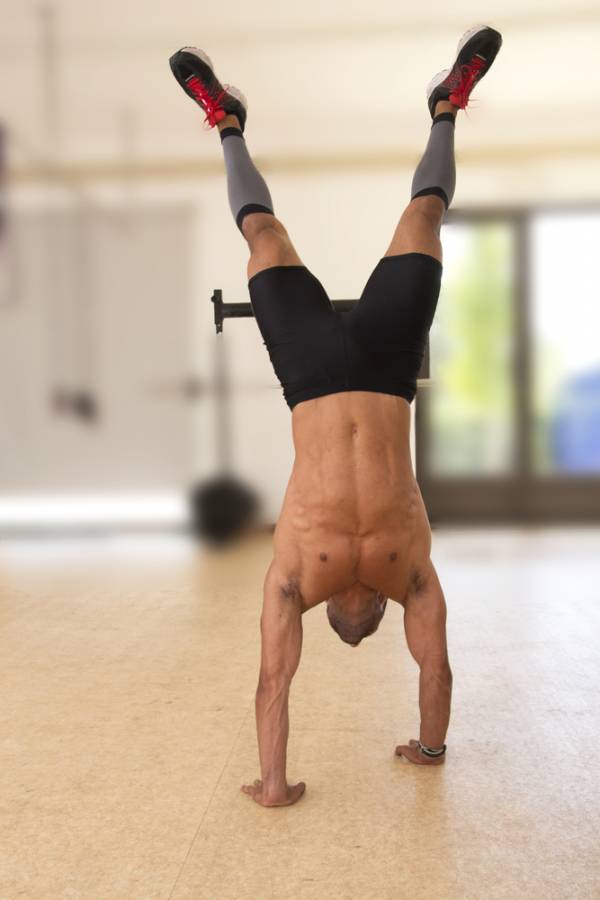It seems like CrossFit is always on the defensive. There are a lot of people out there who have never set foot in a box or done a WOD who are shouting about the dangers of snatches and overhead squats. This week, while teaching mobility to a medical student at a CrossFit gym, the future-doctor and I got into a conversation about how a person is exponentially more likely to become injured playing soccer than doing a WOD. So, I get it – most coaches and avid CrossFitters are just sick of the haters.
Unfortunately, though, I think the unintended consequence of all the criticism is the way it has put the CrossFit community on the defensive and actually made the community less likely to consider valid dissenting opinions. As someone who generally respects the CrossFit program but at times takes issue with it, I find this consequence unfortunate.
First, let me reiterate, I’m not someone who jumps right to the assumption that CrossFit is dangerous. I’m a yoga teacher, yoga is my primary physical discipline, and I realize even yoga can be dangerous when done incorrectly. I acknowledge there are many benefits to the CrossFit program, and I’m tremendously thankful to the local CrossFit box that has taken me in, supported my mobility program, welcomed me to workouts, and invited me to countless barbecues and social events. On the whole, I think the community is awesome.
All that said, I have a few big issues with the program, and I find it really hard to get people to listen. Sometimes a voice from outside the community can be intelligent and contribute something very valuable. Here are three things I’d love coaches to hear from the outside:
#1. Working Out For Life, Not For Now
As a yoga teacher in Los Angeles, I often feel pressured to get people really sweaty, have them do tons of core work and plank holds and push ups, and let them skimp on the restorative poses. I feel this pressure because at the end of the day this is what people think they want. My teacher always reminds me, “Don’t give them what they think they want, give them what they truly need. We want them to practice yoga for the rest of their lives.”
This is such critical advice. Unlike soccer, which most people will play for ten or, if they play collegiately, twenty years, a fitness program is something we want people to practice for forty or fifty years. I really hope I’m still active and fit when I’m eighty, and with that in mind, I have to take care of my body now. Coach Andy Petranek wrote a great piece on this issue, A Different Version of CrossFit, discussing how he adapted his training in order to stay active after forty. What’s the point in being ripped in our twenties and thirties if we can’t be active in our forties and fifties?
Ultimately, I question some of my athletes on whether they are working out for life or just for now. I have a lot of athletes who come to me with reduced range of motion in the shoulder. Specifically, they have pain in overhead movements. I tell them, “Sounds like bursitis. You need to see a doctor and stop overhead lifting for now.” More often then not, they don’t. In fact, I have some athletes who have severe pain for months at a time but refuse to see a doctor, perhaps because they fear being prescribed rest. (If you’re reading this, you know who you are, see a doctor!) I am concerned the focus on Rx and competition at the box, while well intended, can result in neglecting to care for injuries and make athletes lose sight of the big picture.
#2. Paleo Dieting at the Expense of Eating Healthy
 On a very basic level, I agree with the principle of paleo dieting. Before paleo became such a big craze in CrossFit, diets like Body Ecology and Clean Gut were touting essentially the same principles. Eat pure, clean foods, limiting dairy, grains and sugars. This leaves us with primarily vegetables and meat. However, generally speaking, people enjoy the taste of meat more than vegetables, so it is more enjoyable to “keep paleo” by simply eating a lot of meat.
On a very basic level, I agree with the principle of paleo dieting. Before paleo became such a big craze in CrossFit, diets like Body Ecology and Clean Gut were touting essentially the same principles. Eat pure, clean foods, limiting dairy, grains and sugars. This leaves us with primarily vegetables and meat. However, generally speaking, people enjoy the taste of meat more than vegetables, so it is more enjoyable to “keep paleo” by simply eating a lot of meat.
I regularly see my friends and athletes post pictures of paleo meals that look something like this: three eggs, five strips of bacon and a steak for breakfast. Really? I get that this is paleo, but do we really think this is healthy? Do we think this is healthier than plate of ninety-percent vegetables and ten-percent beans, which is technically not paleo?
I’ll toss this one out there, too: I attend some CrossFit parties that are “paleo except for the drinks,” which is a big exception in such a fun-loving community. I have a hard time believing my vegetarian, non-alcoholic diet, which includes some items on the paleo “don’t list” like goats milk yogurt and non-GMO corn, is somehow less healthy than one made up of bacon and beer.
I believe paleo done right can be an excellent way to reduce inflammation in the body, therefore creating a healthier, leaner physique. I believe paleo done wrong, though, is just Atkins diet in disguise. I’d encourage the CrossFit community to stress the importance of choosing the healthiest option available, even if it is not technically paleo.
3. CrossFit Handstands: Really People?
Handstands are a thing these days. They’re a thing in CrossFit, and they’re a thing in yoga. Everyone wants to show off with a handstand picture on Instagram. So, if we’re going to do them, let’s do them right! Here are my two main issues with the CrossFit handstand method – shoulders and hammies:
The shoulder joint is not designed to support the entire weight of the body. Therefore, it is important to transfer as much weight into the core, lats, and legs in handstands as possible. In yoga we have a saying, “Every part of the body lifts itself.” This is so important in a handstand. When we start standing – upright – and kick into handstand, we cannot properly ground the hands and align the body to transfer weight into the major muscle groups. We, essentially, bypass core strength and use momentum to get up. The result? Our shoulders bear the brunt of the weight. For some, we may also hyperextend and even dislocate the shoulder.
By starting with the hands grounded and either pressing up or kicking up with as little momentum as possible, we are forced to engage the core, including the adductor muscles and psoas, in order to lift. The shoulders are strongly engaged into their sockets and far more protected.
 It is also easy to pull a hamstring when kicking into handstand from standing. A fun little fact: the limbs are actually lighter when they are stretched and more flexible. In yoga, when we prep for handstands, we spend a lot of time opening the hamstrings. Then, we start with the hands grounded, and lightly kick, hop, or press from this position. In CrossFit, I see people who just spent thirty minutes running and squatting walk up to the wall to kick to handstand. The hamstrings are very tight, and all of a sudden the leg that plants first is put in a position of extreme extension of the hamstring. This is particularly true when athletes are holding handstands for long periods of time. I watch them come down out of exhaustion and then kick back up. When the body is this tired, it gets very clumsy. The legs flail and we lose our form. I’ve had many athletes come to class and say they pulled a hamstring from handstands. It’s not a career-ending injury, but it’s still something we’d like to avoid.
It is also easy to pull a hamstring when kicking into handstand from standing. A fun little fact: the limbs are actually lighter when they are stretched and more flexible. In yoga, when we prep for handstands, we spend a lot of time opening the hamstrings. Then, we start with the hands grounded, and lightly kick, hop, or press from this position. In CrossFit, I see people who just spent thirty minutes running and squatting walk up to the wall to kick to handstand. The hamstrings are very tight, and all of a sudden the leg that plants first is put in a position of extreme extension of the hamstring. This is particularly true when athletes are holding handstands for long periods of time. I watch them come down out of exhaustion and then kick back up. When the body is this tired, it gets very clumsy. The legs flail and we lose our form. I’ve had many athletes come to class and say they pulled a hamstring from handstands. It’s not a career-ending injury, but it’s still something we’d like to avoid.
Coaches, if you’re willing to listen to some advice from the outside, start your athletes with their hands on the ground. Don’t let them use momentum. If they can’t get up, then tough cookies. They’re not allowed to handstand until they can do it properly. This is my rule in yoga class, and it’s one I use to protect my students for the long haul.
It’s no surprise to you as a reader of this website that CrossFit is drawing huge numbers of people. It’s probably also no surprise that it’s drawn its fair share of haters. I hope these haters haven’t overshadowed valid dissenting opinions. We all need some honest feedback from the outside from time to time.
Photos courtesy of Shutterstock.






